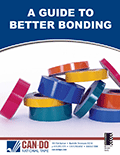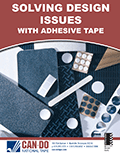Neoprene Foam
Neoprene Foam and Tapes
Neoprene material is a synthetic rubber composed of polymerized chloroprene and is sometimes known as polychloroprene. Polychloroprene is mostly made up of carbon, hydrogen, and chlorine polymers, which are cross-linked to give neoprene certain desirable assets, such as chemical inertness, and thermal, oil, water, and solvent resistance. Once cross-linking happens during vulcanization, sulfur bridges are created that combine single links of chloroprene to produce a more prominent compound.
Some sulfur links impact the whole neoprene substances. Therefore, relying on how chloroprene is vulcanized and the number of sulfur links are generated, neoprene can exhibit an array of characteristics in changing levels without altering its standard construct, and because of this, it is found to be useful in several different applications and products.
Originally, Neoprene was created to function as an oil-resistant replacement for common rubber. However, today neoprene’s additional qualities have actually allowed the usage as a rubber substitute within a vast array of applications. Closed Cell Neoprene offers good resistance to acid, alkali, gasoline, and oil.
Closed Cell Neoprene is excellent for long-term outdoor applications that require resistance to UV, oxidation, and ozone. Neoprene possesses comfortable qualities which make things acceptable with regards to wetsuits, waders, clothing, bicycle seats and shorts, sports gloves, insulated can holders, mouse pads, elbow and knee pads, orthopedic braces, equestrian pads, pet collars, and neoprene covered poker tables.
Applications and products using Neoprene Foam Materials:
- Neoprene dry suits
- Professional diving suits and boots, gloves, and accessories.
- Kayak skirts and boots.
- Boots, orthopedic and sport support products
- Life jacket, survival (immersion) suit and all surface water sports products such as surfing and triathlon suits.
- Wheelchair seating.
- Orthopedic and sport support products.
- Accessories for indoor sports.
A vast range of fabrics can be laminated on neoprene foam to meet the specific functions of your particular product.
- Nylon and polyester fabrics are chemical resistant, elastic and low moisture content (4.5%), and most economical among all materials and provide products with a soft, smooth feel, colorful and durability.
- Stretchy fabrics with SPANDEX provides a smooth, soft, durable and highly elastic will increase freedom of movement and achieve high product performance.
- Fleece and plush thermal fabrics are used to keep warm and comfortable therefore ideal to be used on the inside of products.
 Download our free Guide to Better Bonding
Download Now
Download our free Guide to Better Bonding
Download Now
 Download our free Guide to Solving Design Issues with Adhesive Tape
Download Now
Download our free Guide to Solving Design Issues with Adhesive Tape
Download Now
